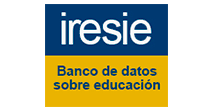GUIDO VIARO: MODERNIDADE NA ARTE E NA EDUCAÇÃO
DOI:
https://doi.org/10.5216/ia.v32i2.3064Abstract
Este trabalho analisa a contribuição de Guido Viaro para o ensino da arte do Paraná, como protagonista de diversas ações no campo educacional na cidade de Curitiba, marcadas pela identificação com a modernidade, pelo incentivo à liberdade e pela valorização da expressão individual, no período que vai desde a década de 30 até meados dos anos 1960 do século XX. Relacionando-se com intelectuais de outras áreas do conhecimento, Viaro participava do debate que então se colocava na educação, na literatura e na arte. Como educador, atuou em frentes diversas: com crianças, com professores e com estudantes de arte. A análise de sua trajetória intelectual procura relacionar suas idéias sobre arte e ações pedagógicas com o pensamento moderno da década de 40, apoiando-se no conceito de Gramsci do intelectual como um partícipe do processo de organização da cultura. Como fontes, foram utilizados artigos de jornais e revistas, projetos pedagógicos, documentos institucionais, programas de curso, atas e planos de aula, bem como fotografias, obras de arte e exercícios escolares.Downloads
Downloads
Published
How to Cite
Issue
Section
License
Inter-Ação uses the Creative Commons Attribution 4.0 License for Open Access Journals (Open Archives Initiative - OAI) as the basis for the transfer of rights. Open access means making documents available on the Internet free of charge, so that users can read, download, copy, distribute, print, search, or link to the full text of documents, process them for indexing, use them as input data for software programs, or use them for any other lawful purpose, without financial, legal, or technical barriers.
Authors publishing in this journal agree to the following conditions:
1) Authors retain copyright and grant the journal the right of first publication, with the work simultaneously licensed under the Creative Commons Attribution License, which permits redistribution of the work with attribution and first publication in this journal.
2) Authors are permitted to enter into additional, separate agreements for non-exclusive distribution of the version of the work published in this journal (e.g., for publication in an institutional repository or as a book chapter), with attribution and first publication in this journal.
3) Authors are permitted and encouraged to publish and distribute their work online (e.g. in institutional repositories or on their home page) at any time before or during the editorial process, as this may generate productive changes as well as increase the impact and citation of the published work.















